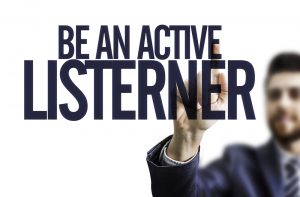Podcast: Play in new window | Download
Subscribe: RSS
 For many of us that move into a new role there is a tendency, after the initial euphoria, to reflect on specifically how we excelled in our past position and then how we can replicate this success
For many of us that move into a new role there is a tendency, after the initial euphoria, to reflect on specifically how we excelled in our past position and then how we can replicate this success
as we take the next step on our career path.
I recently went through a similar scenario when I moved from my Account Director role here at Excel Communications to that of Commercial Director for our organisation.
Looking back at my time as an Account Director I was often asked by colleagues, “What do you think makes you successful?”
Without doubt having a great range of products and programmes and the support of a focused customer service team are important however, the main differentiator between good and great has undoubtedly been my relationships with customers.
And this is just as true in any industry; particularly in our connected world, where there is a myriad of ways to connect with each other.
So here are my key suggestions for building meaningful relationships with your customers:
1) Understand your own organisation and what you offer.
There is a well-known pre supposition that suggests we; ‘start with the end in mind’. This is particularly important when it comes to delivering what our customers want. All too often organisations forget the value that they add and how to communicate the way they interact with their customers.
For instance, at Excel Communications we have the ability to deliver our training in multiple languages through our team of trainers. This is important for many organisations who want consistent training across the globe, which brings me to the next foundation step.
2) Understand your customer.
Unfortunately, it’s easy to make assumptions about our customers and what might be important to them, or what the key challenge currently is in their business or sector.
Consequently, in-depth research before you meet, will inform you of the ‘issues’ whilst at the same time impressing your customer; surprisingly few people take the time to do this.
Though your first interactions will provide you with a comprehensive level of insight (see later in this post) this is a vital first piece of the puzzle.
3) Be a problem solver.
If you want to build rapport with your customers fast, make sure you are a problem solver. Though it is ‘nice’ to think that customers might be impressed with your product range or service what is most important to them and the question in their head is: “Can this person solve my problem?”
The pre research you have carried out along with skilful questions will help you demonstrate this in a way that will enable your customer to experience those ‘break through’ and ‘light bulb’ moments that invariably are the catalyst to your customer saying, “when can we start?”
Of course establishing yourself as a great problem solver will involve you demonstrating your own communication excellence which I want to expand on more in the next point.
4) Flex Your Style.
In today’s diverse workplace that is, culturally and educationally diverse, more versatile communication is vital and it starts with us.
When you meet a customer for the first time look for the behavioural cues that will help you recognise their preferred style of communication. This allows you to better match their preferences by being more versatile in your behaviours. This builds rapport more quickly and creates stronger, longer-lasting partnerships.
5) Walk a mile in their shoes: Second Position.
“Step into the shoes” of your customers, take time to understand their world and importantly how they perceive it. Their perception will almost certainly be different to yours. There are a few questions I ask myself to help give me insight into how a client maybe thinking and perceiving what is happening for them. Use them and see how they work for you.
- What are the short and long term implications of the client’s problem?
- What impact will this have on my client’s team, colleagues, company?
- What will happen if they decide to continue as they are?
- What are the short and long term implications of solving this problem?
When you do this you have the opportunity to understanding what is really going on for your customer,
in a way you have not previously experienced.
6) Actively Listen.
Notice the language and phrases your customers use so you can reflect this back to them when you are presenting. It says to the customer ‘I speak your language’.
7) Exceed Expectations.
This is an underutilised strategy that most individuals forget. In my experience customers do appreciate the fact that we are all human beings and as long as we don’t raise unrealistic expectations on our ability to deliver in the first place, clients are flexible and understanding.
Agree deadlines and actions based on a ‘worst case scenario’ this then gives you an opportunity to ‘under promise’ and then ‘over deliver’, always aim to be 2-3 days ahead of the deadline. This makes the customer feel valued whilst proving that you are trustworthy.
How well are your teams developing meaningful customer relationships? At Excel Communications we have delivered Sales Training at all levels of the sales team pipeline over 30 years and on most continents, in multiple languages. You can view the results we get for clients here. Alternatively call us on +44 (0) 1628 488 854.

